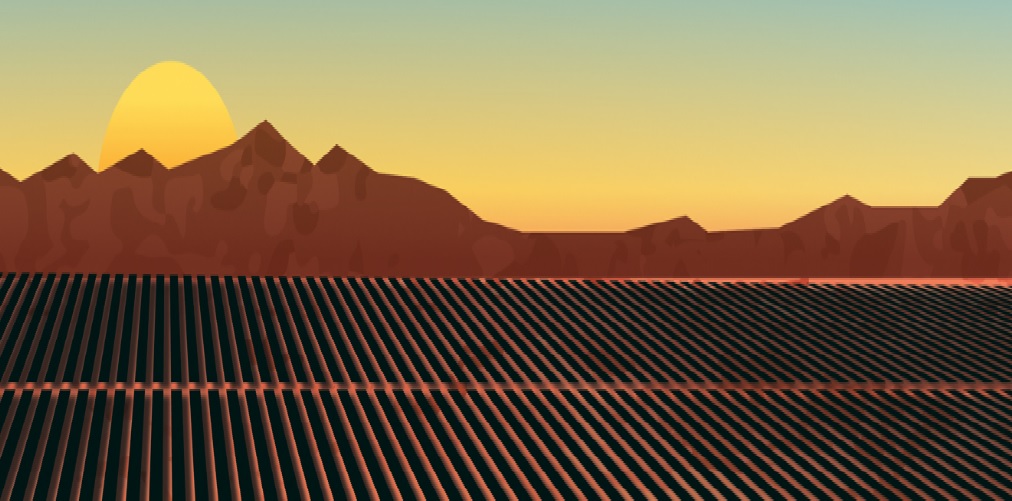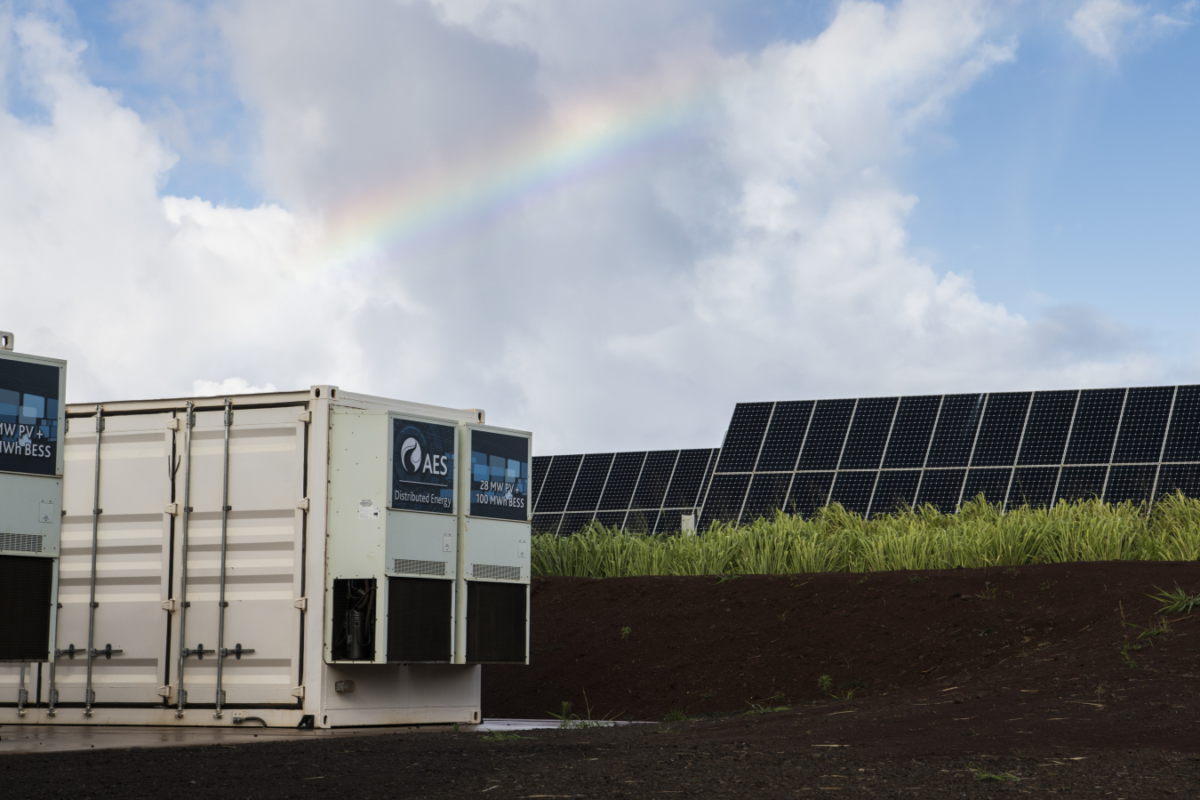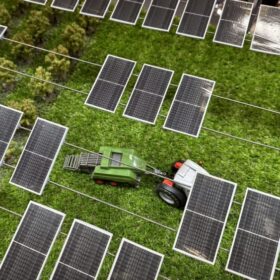The Bureau of Land Management (BLM) issued the final approval for construction of the Oberon solar project on about 2,700 acres of BLM-managed land near Desert Center in Riverside County, California.
“This solar project is the third project approved for full construction under the Desert Renewable Energy Conservation Plan and an example of how public land in California plays a big role in achieving the Biden-Harris administration’s goal to achieve 100 percent carbon-free electricity by 2035,” said Karen Mouritsen, BLM California State Director. “The BLM is committed to responsible renewable energy development that balances conservation and utilization of public land.”
The Desert Renewable Energy Conservation Plan (DRECP) is a collaborative, interagency planning effort covering 22.5 million acres in seven California counties and it has two primary goals. First, to provide a streamlined process for the development of utility-scale renewable energy generation and transmission in the deserts of southern California consistent with federal and state renewable energy targets and policies. And second, to provide for the long-term conservation and management of special-status species and desert vegetation communities, as well as other physical, cultural, scenic, and social resources within the DRECP Plan Area using durable regulatory mechanisms.
Both the BLM and California Department of Fish and Wildlife (CDFW) have legal responsibilities to conserve wildlife under the Federal Endangered Species Act and the California Endangered Species Act. The BLM must ensure the needs of wildlife, fish and plants are taken into consideration when authorizing land use. The CDFW requires that project developers avoid, minimize, and/or compensate for impacts to fish, wildlife, plants and their habitats.
Despite these safeguards, environmental groups have expressed opposition to the Oberon Solar Project. Basin and Range Watch is one such organization, which has the following statement on its website: “In spite of BLM’s new mitigation measures negotiated between the contentious environmental assessment and final decision under the DRECP, this project will still kill a significant amount of desert ironwood trees–an imperiled vegetation community in California.”
In January of this year, local paper Desert Sun published an opinion piece by Palm Desert resident Ruth Nolan who expressed her opposition to the project. “For our federal government to give license to corporations who stand to gain money by exploiting and destroying our public wilderness in this way is a disgrace and is the antithesis of environmental sustainability. Siting large-scale renewable energy projects in California’s desert wilderness areas is not only unnecessary — rooftop solar is a viable alternative — but deeply unethical.”
Last week the BLM Palm Springs South Coast Field Office authorized Oberon Solar LLC to begin full construction of Oberon 1 and II, which together will generate up to 500 MW or enough to power approximately 146,000 homes. The project will also have 500 MW of battery storage. Both are expected to be operational in 2023.
The BLM said it is currently processing 64 utility-scale onshore clean energy projects proposed on public lands in the western United States, including solar, wind and geothermal projects. These projects have the combined potential to add over 41,000 MW of renewable energy to the western electric grid.
The BLM is also undertaking the preliminary review of 90 applications for solar and wind development, as well as 51 applications for wind and solar energy testing. These clean energy projects will move the US closer to achieving the Biden administration’s goal of 100% carbon free electricity by 2035 and also supports the California Senate bill that sets a 60% renewable energy portfolio standard by 2030.
This content is protected by copyright and may not be reused. If you want to cooperate with us and would like to reuse some of our content, please contact: editors@pv-magazine.com.









“Siting large-scale renewable energy projects in California’s desert wilderness areas is not only unnecessary — rooftop solar is a viable alternative — but deeply unethical.” Yet, the CPUC is pushing ahead with killing rooftop solar statewide by eliminating NEM-2.0 with a new NEM-3.0 that would make rooftop solar adopters pay more for their power than those who chose not to care and do nothing. We should be covering every roof, parking lot and aqueduct in the state before we ruin lands that are wilderness or cut down trees for solar energy generation. If a private company, can make money, leasing a solar roof or solar panel system to the homeowner, why couldn’t the utilities do the same thing and basically use everybody’s rooftop and maintain a leak free roof in exchange for the energy generation rights and green credits from that roof?
Why include an inflammatory quote that is grossly incorrect? We’ve got plenty of deserts in California, Nevada, Arizona etc. These areas are literally wastelands with names like Death Valley and Furnace Creek.
We don’t have enough rooftops to supply current electricity demands let alone cover the electrification of heating, transportation, desalination and process heat. Deserts in the southwest are the logical location for these projects.
For some perspective consider that this project will produce around 1 to 1.25 TWh of electricity a year. If we want to zero out emission we’ll need to generate at least 6000 to 8000 TWh of electricity with solar power. This means we need to build thousands of projects like Oberon.
The most logical desert area to use is the former Nevada Nuclear Test Site–hundreds of square miles of sun drenched land. It’s already damaged (slightly radioactive) and already fenced off from the public…ready for a +Gigawatt solar farm. Leave the other desert areas alone–they are unique wilderness areas.
Death Valley is a National Park. Get informed before you speak. Many of the solar projects are currently being appropriately built on dry lake beds in the Mohave desert.
I think there is some merit on both sides of the argument. The desert being a waste land is literally being wasted. The beauty of large tracts of land is that it will be cheaper per megawatt to install. This is not to say that there are not several square miles of waste land on the roofs of warehouses, factories, industrial parks, shopping centres, etc the length and breadth of California. (a flyover with google earth will prove this) The problem with that acreage is that it is broken up and not contiguous. Assembling 2700 acres would involve hundreds of owners and likely dozens of substations. In a way it is more elegant as the production and consumption are almost side by each in most cases. But I see no way a single authority could possibly manage this as project with so many players in a short time. A program with a lifespan over
a few decades maybe. If you want the those megawatts asap, the desert is the way to go.
The problem with installing in the desert, there is no infrastructure to get the power 150 miles to the west to the users of that energy. Someone has to install the towers, wires, DC to AC converters to push power through step up transformers to 500,000 volts then step it back down at the city it is supposed to power. Who pays for the transmission system? The rate payers to the utility? the taxpayers to the Government? Or the people who build the solar farm out in the desert? Right now, in California, it is the utilities, and that cost is passed onto the ratepayers and that is why the rates for electricity are three times higher in California than in other smaller states. A 100-megawatt solar array my only get 70 to 90 megawatts to market after the losses to transmission resistance and voltage boosting and reduction because of the long distances of transmission. Rooftop solar only goes a couple of hundred feet to the next utility meter and has no losses once it goes beyond the meter of the home the solar is on.
The writer of the op-Ed has dated information. Rooftop solar might be mathematically viable, but is temporally infeasible. Simply put, we missed the window on convincing millions of individual property owners to get the volume of energy required to meet a 2035 goal. Even if we compelled all property owners to install, the labor bottleneck would mean years and years before we’d even get the benefits of the theoretical impact